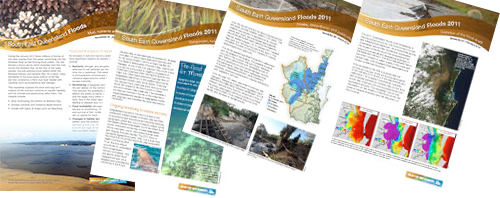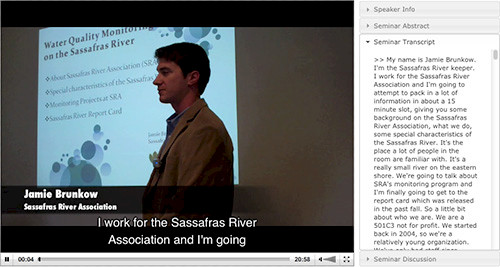Innovations in Environmental Synthesis, Reporting and Governance: Part 6 - Using press and video in science communication
Bill Dennison ·Another thing that we did was create IAN Press. We’ve created a self publishing kind of approach and what’s cool about it is that this can be full color, 230 pages, and we can sell it for $20 US, and not lose money. We finally have the technology of tablet computers. The tablet version really works because you can scale up images and get a really good look at them. I think that the electronic tablet era is going to be really handy for these kinds of publications. It’s one thing to do a big synthesis effort, but I think the other thing is to do synthesis on the run, and I think that’s an important consideration. I have a series of newsletters that we did in association with the floods that occurred in January. The point is to synthesize at every opportunity, not just at the end of the project, do it as you go. Therefore, producing reports, newsletters, brochures, or posters using science communication principles can be really powerful.

We also use video. We had started producing a typical science seminar series with 45 minute seminars, and 15 minute of questions. This turned into 50 to 55 minute seminars and 5 minute questions, and by the end everyone was brain dead. So, we turned it into 15 minute videos and then had time and energy to have a full discussion afterwards, which we blog, and post associated with the video.

We closed captioned the video so you can read the transcript and look at the PowerPoint independently or sit and listen to the video with the closed captions. We have found that many students are blocked from using YouTube, so there is a channel called SchoolTube that supports videos that students can actually access. So I think we need to be more creative in our science communication by using different media, using the tablets, using smart phones, and the internet.
This blog post was created from a presentation by Bill Dennison to the Terrestrial Ecosystem Research Network in Melbourne, Australia on 29 Mar, 2011 (
About the author
Bill Dennison

Dr. Bill Dennison is a Professor of Marine Science and Vice President for Science Application at the University of Maryland Center for Environmental Science.

